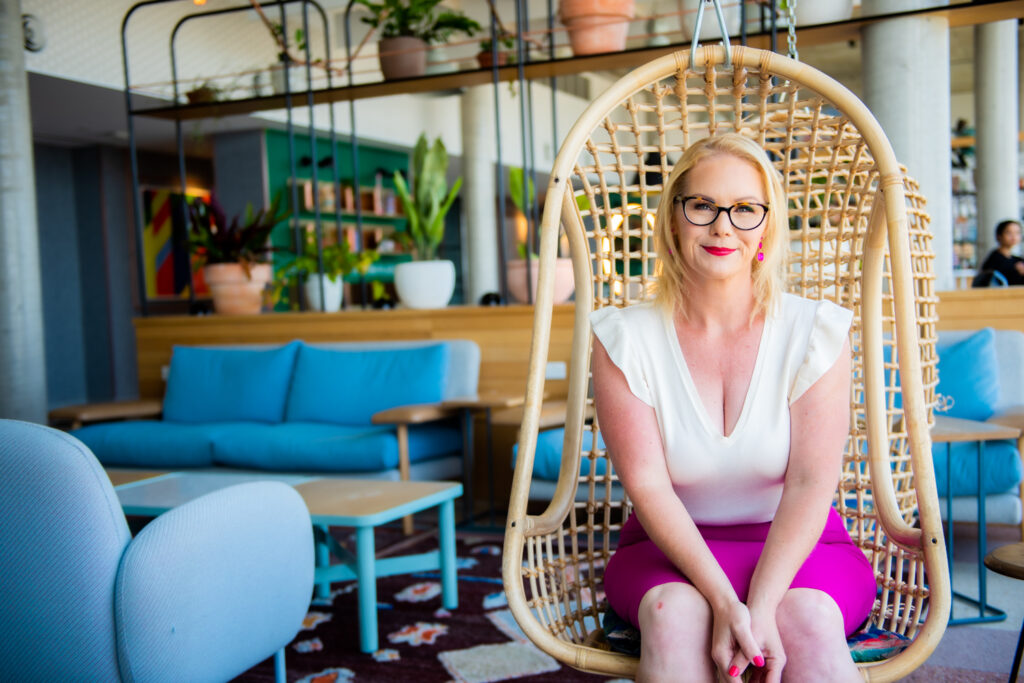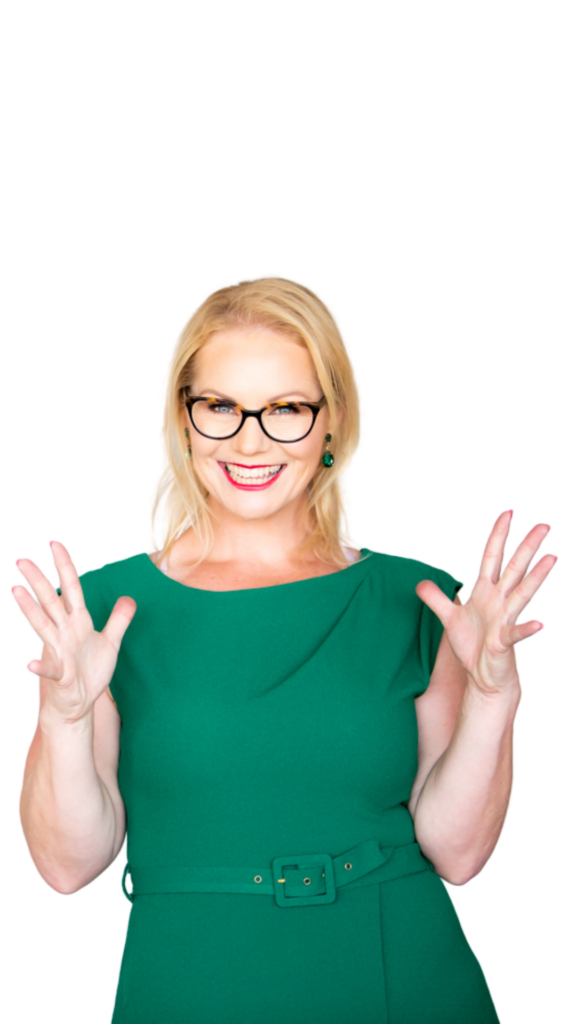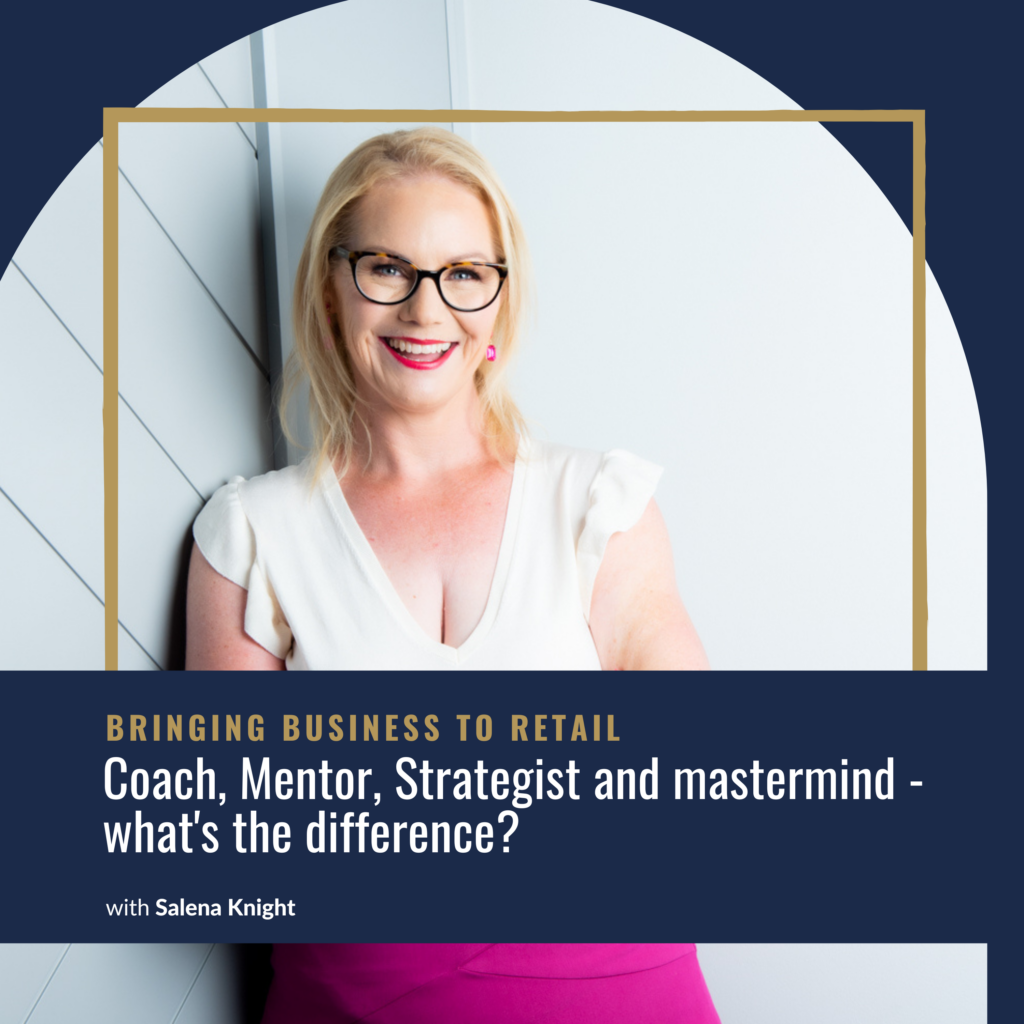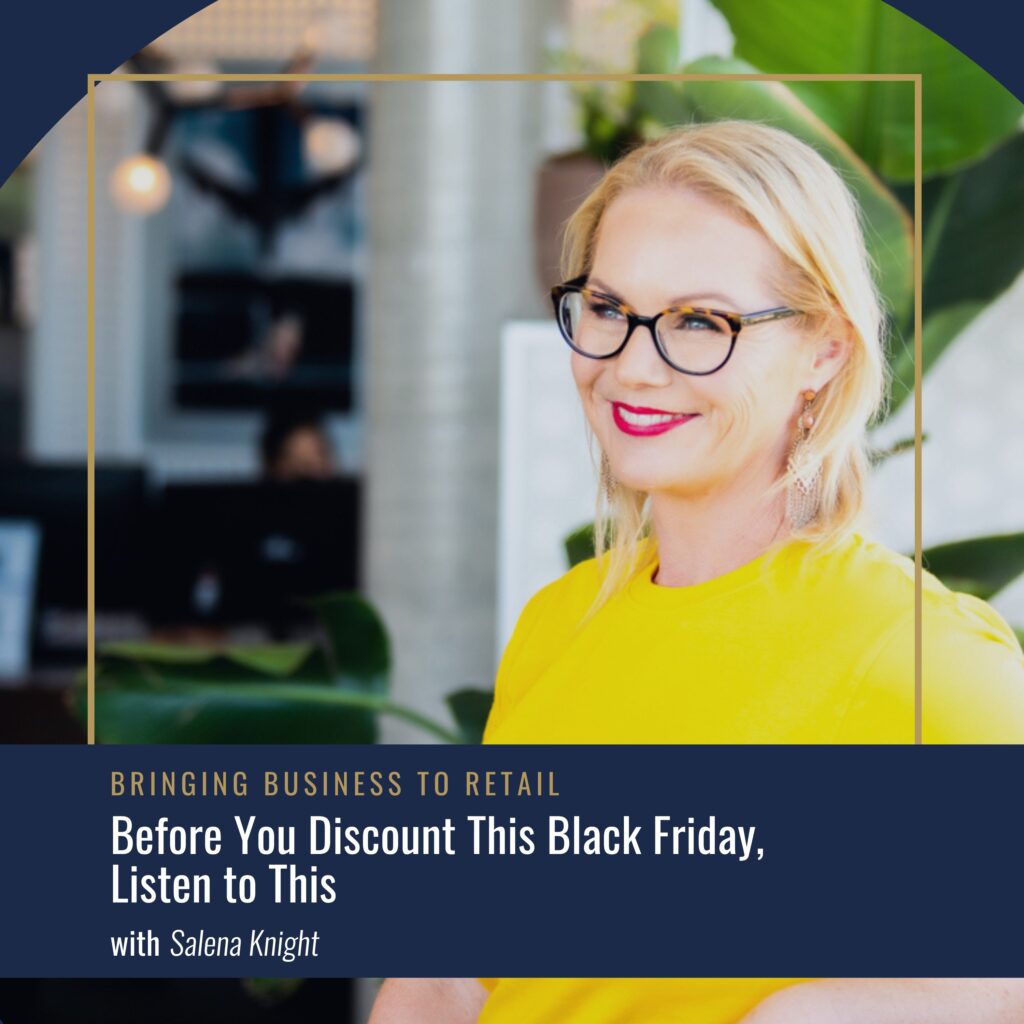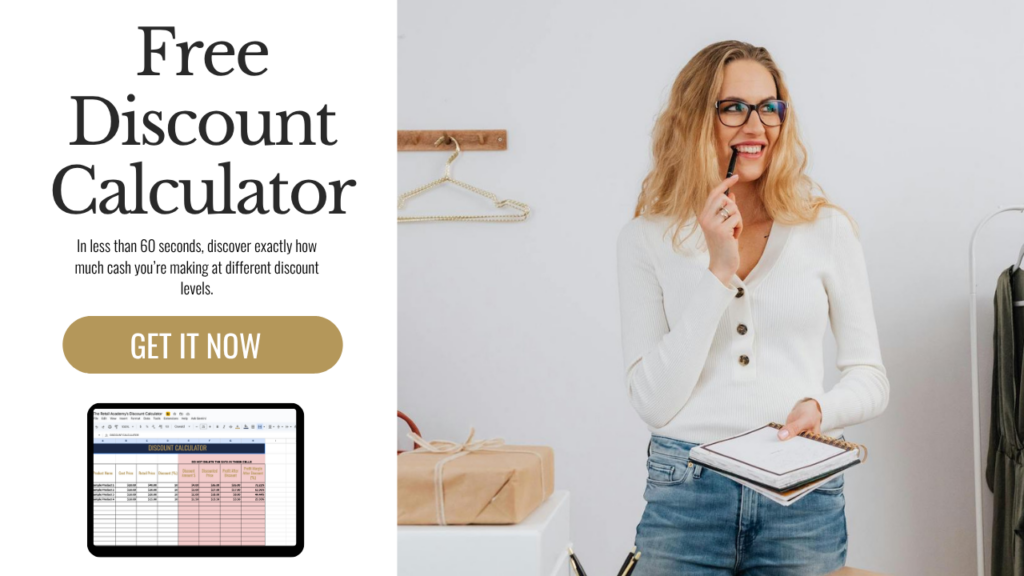
SHOW NOTES
Step into the shoes of a retail coach and walk alongside me in this special behind-the-scenes episode.
This week, we’re taking Walk Club out for a spin – my favourite way to work through business challenges while getting some fresh air. There’s something about moving your body that unlocks different ideas, and in this conversation you’ll hear exactly how that plays out.
You’ll join me as I chat with a store owner who feels like their sales just aren’t where they should be. Together, we dig deep into their numbers, question assumptions, and figure out whether the problem lies in conversions, traffic, or simply not having enough eyes on their products. Along the way, we explore how to make email marketing work harder, why segmenting and nurturing VIP customers can drive bigger results, and how high-ticket items can sometimes be the fastest path to more profit.
It’s raw, practical, and straight from the pavement – no slides, no scripts, just real strategies in action. If you’ve ever wanted to be a fly on the wall for the moments when clarity strikes, you won’t want to miss this walk.
– Sal
LISTEN NOW on The Bringing Business To Retail Podcast
Hey there, and welcome back to another episode of the Bringing Business to Retail podcast where we talk all about strategies to grow your retail or e-commerce business. I'm Selena Knight and thank you so much for joining me. Now, I have just come off the back of three very intensive mastermind days in California in the beautiful, always sunny.
Newport Beach. And what I really loved about the event was this ability to be able to peek behind the scenes of other people's businesses. So the speakers that came in didn't just share presentations. They basically took us behind the scenes of their businesses and showed us what was working, what wasn't.
And honestly, I find. So empowering to be able to hear real conversations. So it's easy to make up examples, but when you can hear real conversations, real problems, and going into the details and actually nutting the problems out in real time, that. Is when so much happens for you as a business owner. So I thought, you know what?
On today's episode, let's take you and do exactly that. Now I have a little thing I call walk club, which is. Just like it says on the box, we go walking and we talk about business. And so what I thought I would do today is take you behind the scenes of what we can do on Walk Club, which is basically hash out the problems in someone's businesses as we're walking and the connection that you have in your, the neuro pathways when you are moving versus when you are sitting say, behind the desk.
So much more happens, which is why I love Walk Club. And today you'll go behind the scenes as we pull apart. Why this business feels like they're not getting enough sales. I really hope you enjoy it, and please let me know your feedback. Do you like these kinds of episodes? Let me know in a DM and please leave a review.
Alrighty, here we go. We need sales. We need to increase our sales. So, whatcha doing to drive sales? Well, I guess we, we've had moderate success with, you know, our hotspots around the store. Changing the products, kind of looking further and deeper into the perfect product mix. And that's kind of working a bit, but we just don't get the response from our marketing, from our emails, our, even the social posts and things we do and, okay, so when you look at traffic and conversion.
You are tracking your metrics, is the problem that you are down in visitors or is it that you've got the same amount of visitors and you've got different conversions? Conversions? I think it's the conversions. Yeah. We we're sort of, it's a tricky thing 'cause a lot of people just come in not wanting to buy, you know, they just come in and then they see something and they have to come, have to buy something.
But maybe I need to change my people. Come in. Yeah. I disagree because I always use the example of if I was waiting for the bus and there was a guitar shop there. I would not walk in the door. I would just wait for the bus. I have no interest in buying a guitar. I dunno. Anyone who would use a guitar, I just wouldn't go in there.
So the fact that someone comes into your shop. Signals that there is some kind of intention that they would buy. Does that make sense? Right. Okay. Yep. Like I'm just not gonna go into a skateboard shop. Like what would I do there? I just wouldn't. So if you are walking into your shop, they show some kind of intent.
My concern with what you're saying is you think it is conversions. I want the data. Okay. How many people walked in the door? How many people came to the website? And how is that different to last month? The month before? The month before. The month before. Okay. Because we can't spend time fixing the wrong thing.
Yeah. Okay. So if it is just that there are less people coming in the door and there are less people coming to the website, then you are not in enough places. So you know, you need to start maybe paying for some ads or, you know, posting on YouTube or LinkedIn or. Somewhere that you are not posting right now to be able to get the breadth of customer, you know, potentially seeing your eyeballs.
Okay? How many people are on your social media list? So many social followers. Two half on Facebook and in stuff. Okay. Okay, so two half thousand.
The rough visibility rate is 3%, so that means around 60 people are going to see a post, right? So, I mean, not many, you know. Not many. Yeah. Because then if you only get a 1% click through Yeah. You're looking at, you know, one person, not even one. One person. Yeah. Half a person. Yes. Which is why I'm like, which is why I'm like hassling you about whether it's traffic or conversion, because there's no point you're spending on money on ads.
If the problem is actually the conversion side, like if, if the problem is that, that you've got loads of people coming and no one's buying, that's a completely separate problem to fix. Okay. But if you just don't have enough eyeballs. Okay. So, oh, dig further into the data. So retaining this information.
Yeah, there's a lesson on that part. Don't worry. So with your, you said that I think, what did you say? Four and half thousand on that email list? I think that's about that. Okay. Three and a half? Yeah. Three and half. An average open rate. 20. 25%. 40%. What's your click through rate? That's 7%. 7%? Yes. That's huge.
But then we're not getting nce from it. We're not getting the sales. So I, that surprises me, like those numbers are extremely well above benchmark. Like to have 40% open rate in e-commerce, it nearly double the average. So it does say that your people are highly engaged and to have, so whatever you're doing in the emails, like your subject lines and stuff, they're working because the average open rate is about 21%.
Kudos to you. Whatever you're doing is working. Click through rate 7%. That's like off the charts. That's like amazingly fantastic. Then they're not buying. So I would be looking at, so two things for you guys. One, are we selling that product in store? So do you guys use Klaviyo? Yep. And do you use Shopify?
For Shopify? What POS do you use? Yes. We use Shopify and Lightspeed. Ven in the store. It should all be linked, but I think Klaviyo. Okay, so why we can't link the okay to the Klaviyo because we don't have the right, we've got an old format of end. We've got an old legacy format. Okay, so here is a slight problem is normally what would happen is you would be able to track whether someone opened your email and then bought in store.
We talked about this the other day, is like you did the, the campaign, how many people opened and then you said that, you know, five people had bought in store, which is actually a pretty great conversion rate. I think you said something like, was it like 20 people had clicked through? I'm trying to remember off the top of my head.
I've talked so many people, um, and five people bought like that, that conversion rate is amazing and so I honestly think the biggest issue right now, just without having any data, is volume. Okay. At the moment, the volume is so small that you should be able to go and I would be manually tracking who bought the thing in store against who clicked through on the newsletter.
Right. You know, it's only five people. It's not gonna be that. Exactly. Yeah. So then you're going to be able to run actual numbers and give me more accurate data. But honestly, I think it is just how often do you send a newsletter out? Yeah, so once or twice a week. Depending on what happened. Okay. So, yeah.
Yeah. Do you, do you, uh, like, so questions then would be, are you segmenting those people and do you see a bigger uptick of sales if you send two rather than one? No, uptick and we, we do segment them a bit. Okay. I would dig into segmenting. I mean, four and half thousand people in the database is pretty good.
Like, I would expect that you would be doing a thousand dollars per email. Like, how much are you doing? We are lucky if we get one sale, which would be $60, hundred, hundred dollars, maybe 300 if it's a good one. That's a real good one. Okay. That that surprises me because those numbers, with what you've just said, the data doesn't line up to have a 40% open rate.
People is like 2000 people opening the email and then a 7% click rate is 140. Is that right? You're
40 and only getting a, I mean that's less than 1% conversion rate like that. I dunno. I would know. And they're already engaged, right? So they're already know our product, know us. Yeah, yeah, yeah. And. I, yeah, the numbers aren't stacking up. Like the numbers that you are giving me don't pass the common sense rule, and I'm just not wondering if those sales are translating in store.
The number. Yeah. The numbers that you're giving me, don't pass the common sense sales air map rule. I think you need to dig into them more and see, I don't know. I would expect kind of five sales from at least five sales from that. That would make me so happy. Are you resending to unopen? Yes, but I, I, I mean, in the last six weeks I've started doing that, but I haven't seen any change.
Yeah. And you're not getting any extra sales? No, that surprises me. Like it's, I don't know, there's just something, there's something missing because your numbers don't line up. That kind of open rate is highly engaged. That kind of click through rate is off the chart. Are they going to the individual products or like category collections?
Or are you just sending them to the homepage? Yeah, no, they're sending them to the links. Like the category or the product? Mainly a category. Yep. Okay. So what does your Google analytics say in terms of like drop off rate once they've clicked through? How long are they spending on site? I think two minutes.
That's a long time. Yeah, two minutes. It means looking around, checking things out. I feel like it's hard. I feel like a lot of ours do come in store, but I can't. I feel like a lot of ours are based in Auckland and Wellington, which is offsite, you know, out of town.
So I can't prove, I guess it would be really good if we had the next version of Lightspeed so I could actually track if they are coming in store later. Yeah. Anecdotally when we've chatted to people, um, the thing you've got there is anecdotally in the past when we've chat people, they have, they have said that they've seen something online or whatever and come in store, but it's not 20 people from an email sort of thing.
You know, it's not, yeah, yeah. So I here like, here's my overarching without the data advice is if it is a conversion problem. The issue that you face right now is that if I saw that newsletter and I don't come in for two weeks to buy the thing, there's nothing that ties me together to that. No. 'cause what you are gonna do is send a newsletter and then, you know, at the end of the week or in a week's time, you'll check and see who bought what.
And so having the data that sinks gives you a truer idea of whether you are actually getting more conversions than you think, because I think you're getting more conversions than you think you're then. If the problem, like I would look at Google Analytics and look at the customer journey and see where people are going once they hit the website, especially after a newsletter.
And then if they're coming from social media, where are they going? What's happening? Where are they dropping off to Spend two minutes on a website after someone's clicked through an email like that is amazing. Like this is what I'm saying. I don't, my brain is not computing because the numbers you're giving me.
Would indicate a much higher purchase rate. Yep. Okay. So have we got, was it you guys that had the door clicker that wasn't working? The people counter? Yes. But have you fixed that yet? Yes. I haven't heard that it's broken, but that might not indicate. I will double check. Um, like what does your customer tracker say?
Like other numbers just down across the board in store? So we've got the clicker working and we've also got, got the staff kind of, and you know, accounting the people as they come through. So we can compare. Okay. Because the clicker okay, is not cool. Sometimes, you know, it says we've had 700 people through and we've actually only had a hundred.
And the, it's so skewed and the figures are so different. I don't know where it's going wrong, so. Okay. I mean, you'll always have, if, if you've got a people counter, it will always be more, because if you start going in and out to get a delivery or whatever, that's gonna count. But that amount of difference is, is huge.
Yeah. It's too much. Yeah, it's too much. Yeah. And so we need to, I need to be in there and monitor it like every 15 minutes myself, you know? Wow. Just so we can see where it's, what's happening. Yeah. Is it the CL counter and you just did it for two weeks? Yeah. Yeah. And so have your, so have, has your traffic gone down in store?
Like are the number of people who are coming to the shop have that, has that dropped? Yes. Yeah. It's just a seasonal thing, you know. Okay. So has it dropped based on last year, like this time last year? I can't tell. 'cause we don't have the figures and then we're doing things like, you know, I bought, we bought.
Some new blankets. I felt our store was a bit like luster and you know, $300 blankets and we put them out and we've sold three in three days or four in three days or something, so, oh my God. We just put shit in front of people and they buy it. That's why I can't understand marketing, but what you've told me, this is.
A few times now what you told me is it's the really expensive stuff that's selling, and so like I am sure you're already doing this and I think you already told me that you're doing this, but you know, segmenting out those high spenders and giving them VIP looks before everybody else. Like, when you got those blankets in, did you send them an email two days before everybody else?
And making it really, really clear that, you know, we only have a limited number of designs. We're giving you early access before we send it to everybody else. That kind of FOMO can get people to buy, like, can speed up the purchase process. Right. And we actually just trialed it. 'cause we didn't think, we didn't offer what they would sell.
Yeah. You know, we thought they might be too expensive. So I've put the price up now sale. Yep. Yeah. But the people who have money still have money. Yes. So maybe you just do a much more concerted. A lot of campaigns to your top 20% and, and make it really clear that they're VIP. They get early access, pre-sales, all that kind of stuff.
Mm. Yeah. Okay. That's good. I would be interested to see of the people, the people who are opening the emails, how many of those are in your top 20%? It's a good, good comparison. I feel like also middle people who are sort of looking around, looking at deals, looking at what's happening and those other people can't be bothered and are out having coffee and doing whatever.
You know, like I think the expensive people are probably coming in store. Yeah, that's what I'm thinking. If they can, yeah, I think definitely looking at the data. Also be aware that you can sell less and make more money. So, Joe, you just hit it right on the head, is you could sell. Less items per basket, for example, and make more profit on the more expensive items.
It does mean kind of skewing your customer database and you'll still have all the other stuff, but know that, you know, maybe 40% of your range. I dunno, I'm just making that number up, but off the top of my head, that seems about reasonable is more expensive stuff and you have to be turning that over to keep those VIP spending.
So maybe it is ordering smaller quantities, ordering smaller quantities to make it more exclusive, and then really pumping out those campaigns to the high spenders. And just kinda making it clear, we sold out. So you can say, last time we ordered a product like this, we sold out in 48 hours. Yeah, right. But I still think, I'm still going back to, I think the problem is volume.
Volume. Yeah. Okay. Just based off what you said, it feels like it's just volume. So maybe you do have to start running, you know, if you get a post that gets really good interaction. Yeah. Yeah. Okay. Like it doesn't have to be big. Um, I would also highly, highly suggest starting to post on LinkedIn. LinkedIn, okay.
Push your product on LinkedIn. Your competitors aren't doing it. And you know, that's where. Yeah. Not gonna cost you anything. Take your same social media post and post it on LinkedIn. Okay. We did wonder, I did wonder about doing a sort of local
sort of direct, direct to business type thing. Yeah, yeah, yeah. And definitely like nurture those VIPs. Really make a targeted effort because you will make more of ones. Like if you sell one of those $300 blankets, you, well, how much are they now? Three hundred and thirty, three thirty nine. 3 39. Your profit on that is what? $160. You have to probably sell eight candles to make that much money. Yeah. Right. Or six candles to make that much money. Hmm. Make sense? Yeah. Yeah. So you can have, that's what I was saying before, you can have less sales and make more money. Yeah, sure. So that's a wrap. I'd love to hear what insight you've gotten from this episode and how you're going to put it into action.
If you're a social kind of person, follow me at the Selena night and make sure to leave a comment and let me know. And if this episode. Made you think a little bit differently or gave you some inspiration, or perhaps gave you the kick that you needed to take action, then please take a couple of minutes to leave me a review on your platform of choice.
Because the more reviews the show gets, the more independent retail and e-commerce stores just like yours can help to scale. And when that happens, it's a win for you. A win for your community and a win for your customers. I'll see you on the next episode.
Share this episode


